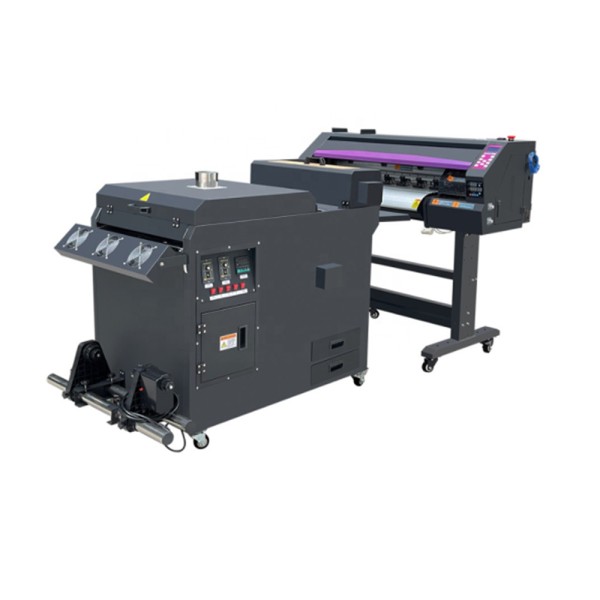Checking out the Art of DTF Printing: Strategies and Applications Introduced
Mastering DTF Printing: Idea for Achieving Vibrant and Long Lasting Prints
Worldwide of fabric printing, attaining sturdy and vibrant prints is a desirable ability that can elevate the top quality of your result. Understanding DTF (Direct to Movie) printing needs a blend of technological knowledge, precision, and interest to information. From selecting the right products to adjust print settings and perfecting post-printing ending up techniques, there are various aspects that can affect the end result of your prints. Recognizing how to navigate these ins and outs can make all the distinction in between a mediocre result and a truly remarkable one.

DTF Printing Basics
For those new to the globe of textile printing, comprehending the fundamentals of DTF printing is essential to grasping this cutting-edge technique. Straight to Movie (DTF) printing is a modern-day approach that involves transferring designs from a special movie onto different fabrics making use of a heat press. Unlike standard approaches like screen printing, DTF provides advantages such as lively shades, complex outlining, and the capacity to publish on diverse products like cotton, polyester, and blends.
The procedure starts by publishing the style on an unique DTF movie utilizing a compatible printer with CMYK or CMYKW ink sets. Once the style is published, it is then treated with a warmth press to produce a resilient and long-lasting print. DTF printing is known for its ability to duplicate complex styles with high precision and color accuracy, making it a popular option for companies wanting to create custom-made garments, marketing products, and more.
Selecting the Right Products

Similarly crucial is the option of the glue powder. The glue powder works as a bonding representative in between the published design and the fabric, so it has to have solid attachment buildings to ensure a resilient and resilient transfer. Various textiles may need various sorts of sticky powders, so it is crucial to match the powder to the fabric kind for optimal results - DTF Printing. By meticulously choosing the best products for DTF printing, printers can boost the top quality, vibrancy, and long life of their prints.
Maximizing Publish Settings
When intending to attain the finest results in DTF printing, meticulous focus to enhancing print setups is crucial for ensuring precise and high-quality transfers onto fabrics. One key element to think about when maximizing print settings is the resolution.
One more essential setup to maximize is look at this site the print rate. Finding the appropriate equilibrium between rate and top quality is necessary. While raising the rate can enhance effectiveness, it might jeopardize the final print's clarity and shade saturation. Explore different rates and observing the results can aid determine the ideal setting for each print task - DTF Printing.
Furthermore, tweak color accounts and making certain appropriate color management are essential for achieving precise and constant shades throughout different prints. By adjusting color setups and profiles, printers can minimize shade inconsistencies and produce uniform results, boosting the general print high quality and consumer contentment.
Preparing Art Work for DTF Printing
Transform the art work to CMYK shade setting to make sure that the colors convert accurately from display to print. Keep in mind to mirror the final style prior to printing to make sure that it moves correctly onto the garment. By following these steps and paying close focus to the details, you can prepare art work that is maximized for durable and lively DTF prints.
Post-Printing Finishing Techniques
Carrying out reliable post-printing completing strategies is essential to enhancing the durability and visual appeal of DTF prints on fabrics. When the printing process is complete, applying heat to the printed design is necessary (DTF Printing). Warm not only help in healing the ink however also guarantees that the shades are long-lasting and lively. A warmth press equipment evaluated the suggested temperature level and pressure setups can help achieve optimum results.
After warm pressing, peeling the animal movie carefully is an essential step. This procedure ought to be done gradually and steadily to stop any kind of damages to the print. As soon as the film is removed, the print may need additional treating time to additionally set the ink right into the fabric. This action aids improve the washability and resilience of the print, guaranteeing it can withstand numerous wash cycles without fading or splitting.
In addition, cutting any excess movie around the design Home Page can offer the final print a professional and clean appearance. Making the effort to effectively end up DTF prints post-printing can considerably impact the overall top quality and longevity of the textile style.

Conclusion
Finally, grasping DTF printing needs a complete understanding of the essentials, choosing suitable products, enhancing print setups, preparing artwork efficiently, and utilizing post-printing completing strategies. By complying with these pointers and methods, one can achieve sturdy and vibrant prints that satisfy their wanted high quality standards. Regular technique and interest to information are vital in achieving successful results in DTF printing.
From picking the best Visit Website products to adjust print setups and developing post-printing ending up methods, there are many variables that can affect the result of your prints. Unlike conventional methods like screen printing, DTF provides benefits such as lively colors, elaborate describing, and the capacity to publish on diverse products like cotton, polyester, and blends.
Once the design is printed, it is after that healed with a warmth press to develop a resilient and durable print.When intending to achieve the ideal outcomes in DTF printing, thorough attention to optimizing print settings is critical for guaranteeing exact and top notch transfers onto textiles.In verdict, mastering DTF printing needs a comprehensive understanding of the basics, picking appropriate products, optimizing print setups, preparing artwork efficiently, and using post-printing completing strategies.